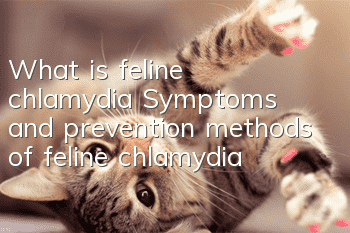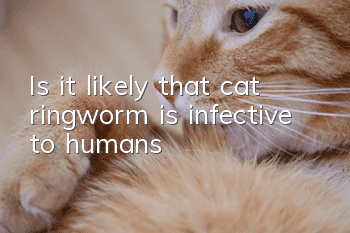What is feline chlamydia? Symptoms and prevention methods of feline chlamydia

Chlamydia is a relatively unstable bacterium that is associated with respiratory and ocular (especially conjunctivitis) infections in cats. Limited research suggests that chlamydia is responsible for approximately 5% of feline upper respiratory tract infections in the United States. An estimated 30% of feline respiratory diseases in the UK are linked to Chlamydia psittaci.
【Clinical symptoms】
The main manifestation is conjunctivitis. At the beginning of the disease, blepharospasm and congestion, conjunctival edema, and tearing appear, and then mucopurulent secretions appear, forming follicular conjunctivitis. Newborn cats may develop ophthalmia, causing closed eyelids to protrude and purulent necrotizing conjunctivitis. Unilateral mucopurulent conjunctivitis can also usually occur in natural cases. The incubation period is 3-10 days, and it develops into bilateral conjunctivitis and congestion in the contralateral eye in about 5-7 days. Symptoms are particularly noticeable 9-13 days after onset and generally subside within 2-3 weeks. Some cats may develop secondary bacterial infections, mycoplasma infections, keratitis, pannus, and corneal ulcers. The sick cat has a loss of appetite and is unwilling to move. Cats with rhinitis may experience paroxysmal sneezing and runny nose. Severe cases may develop secondary bronchitis and pneumonia, with symptoms such as dyspnea, cough, fever, purulent nasal discharge, malaise, and fatigue. The nasal and oral mucosa may even Ulcers appear. Even if some cats are treated, clinical symptoms will persist for several weeks, and a very small number of cats will relapse.
【Pathological changes】
The reaction of conjunctival inflammation is prominent. In the early stage of the disease, neutrophils, lymphocytes, plasma cells and macrophages infiltrate. These cells and conjunctival epithelial cells contain chlamydia.
【Diagnosis】
In the conjunctival scraping or secretion, smear staining, inclusion bodies will be found in the conjunctival epithelial cells.
【Treatment Principles】
For symptomatic treatment and supportive therapy, take oral tetracycline 2-3 times a day for two to three weeks, 15-22 mg per kilogram of body weight. Take doxycycline or azithromycin orally twice a day for two weeks, 5 to 10 mg per kilogram of body weight. Erythromycin eye ointment is applied to the inner eyelids.
【Prevention】
Inject the Wuheyi vaccine.
Recommended Good Things
Aineng Pet Odor Eliminating Disinfectant can effectively remove body odor/feces odor and other odor molecules! Effectively treats skin diseases caused byfungi/bacteria! can killParvovirus/canine distemper virus/coronavirusetc!
It is edible grade for pets, does not contain fragrances, does not contain chemicals, can be sprayed directly, and is harmless to human pets!
Consultation:13028809308 (WeChat synchronization)
Scan the QR code on WeChat to enter the purchase
- Garfield cat external deworming method Garfield cat external deworming method
- How did Siamese cats develop the habit of sleeping at night? The truth is...
- Change cats’ bad habit of scratching and damaging furniture
- Is there any harm in shaving your cat in summer?
- Is it okay for cats to only eat rice?
- What supplements can cats take when eating chicken liver?
- Can kittens be vaccinated after 45 days?
- Does a cat still recognize its owner after being beaten?
- Does the British Shorthair lose hair?
- How to treat vomiting in British shorthair cats, teach you step by step



